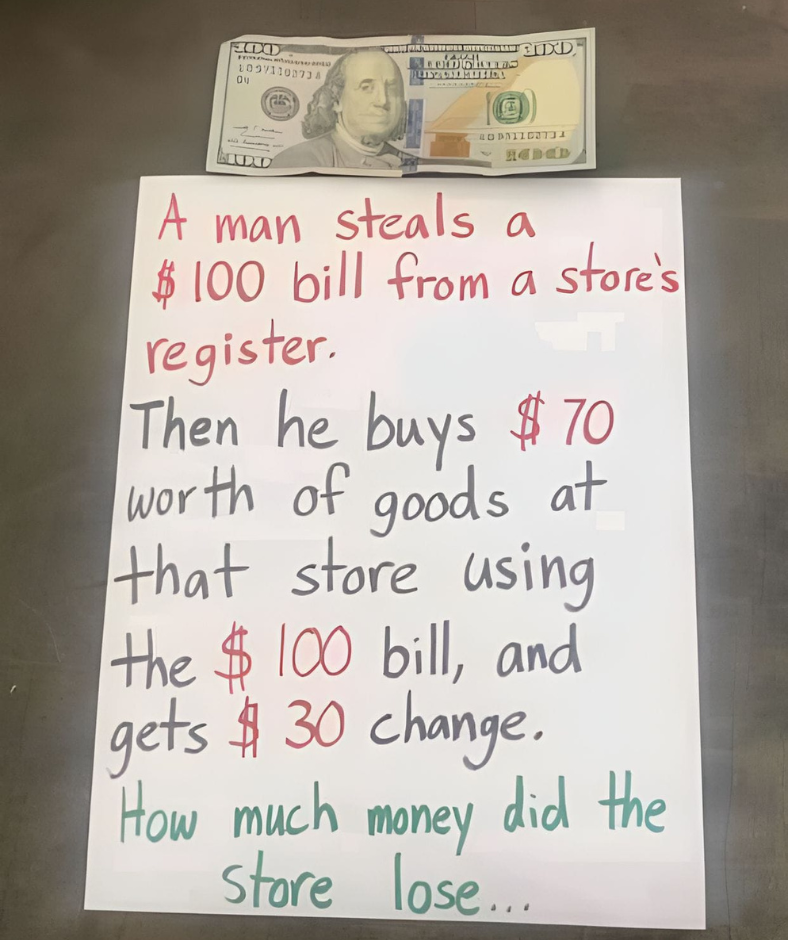The Math Puzzle That Confused the Internet… Can You Solve It?
In the vast expanse of the digital age, even the smallest spark of curiosity can ignite widespread speculation. One such spark appeared in the form of a perplexing math puzzle that left internet users scratching their heads.
The scenario was simple yet puzzling: a thief steals a $100 bill from a store, uses it to buy $70 worth of goods, and receives $30 in change. The burning question? “How much did the store really lose?”
This seemingly innocent puzzle quickly became a viral sensation, sparking debates across social media. People from all backgrounds offered their interpretations.
Some argued that the store lost $100, while others, using their math prowess, insisted the loss was $130, factoring in the stolen bill and the change. Business-minded individuals added nuance by considering the cost of the goods.

So, what’s the real answer? To solve this viral riddle, let’s break it down step by step:
1. The store loses the $100 that the thief steals.
2. When the thief buys $70 worth of items, the store recovers the $100.
3. However, the store gives $30 in change, creating a net cash loss of $30.
4. Additionally, the store loses $70 worth of goods.
Combining the $30 cash loss and the $70 merchandise loss, the store’s total loss is $100.
As strange as it sounds, this viral puzzle reminds us of the joy in problem-solving and highlights the importance of careful analysis. It also showcases how the internet can turn even the simplest challenge into a captivating discussion, encouraging curiosity and critical thinking.

